As I readied myself for an experience in the movies, I noticed even the opening acknowledgments rushing by, not even staying on the screen for more than two seconds. Even the statutory warnings are being quoted in a faster timbre than usual. It turns out my trepidation regarding this movie’s pre-opening segment will carry over to the opening sequence because the first twenty minutes of “Kanguva” are an exercise of excess courtesy of director Siva, aided by late editor Hanid Yousuf.
The present-day sequence is filled with idiosyncrasies (day and night sequences occurring concurrently, Instagram filtering, the tik-tok aesthetic of information rapidly flitting across the screen in neon) courtesy of Yousuf, reminding you somewhat favorably of Khalid Rahman’s “Thallumalla” (2022). But Yousuf’s idiosyncrasy clashes with Siva’s own directorial tendencies, where loudness and broad stroke comedy, rapid whip-pan shot, and a consistently pulsating and heavy bass score by “rockstar” Devi Sri Prasad (DSP) underscore every frame, almost as if scared to let the frame exit without a soundtrack.
The opening 15 minutes of the film are such a massive turn-off that even Suriya’s flamboyant and over-the-top performance or Yogi Babu’s comedy couldn’t salvage it. By the time the movie shifts to the past, my brain barely registers how the film suddenly transitions to a graphical interlude evoking the appearance of artwork on papyrus.
Artworks signifying world-building rapidly pass by, accompanied by a droning voice detailing the group of five islands that the Roman army plans to annex by hiring a mercenary from one of those islands to lure the mighty soldiers away, where they would be killed in the deepening canopy of the forests. The story then takes on a route of the discovery of the subterfuge, the introduction of Kanguva, a tale of revenge and fatherly connection formed from tragedy, a war being manipulated between two nations, which soon reverts to a violent battle of egos and bloodletting.
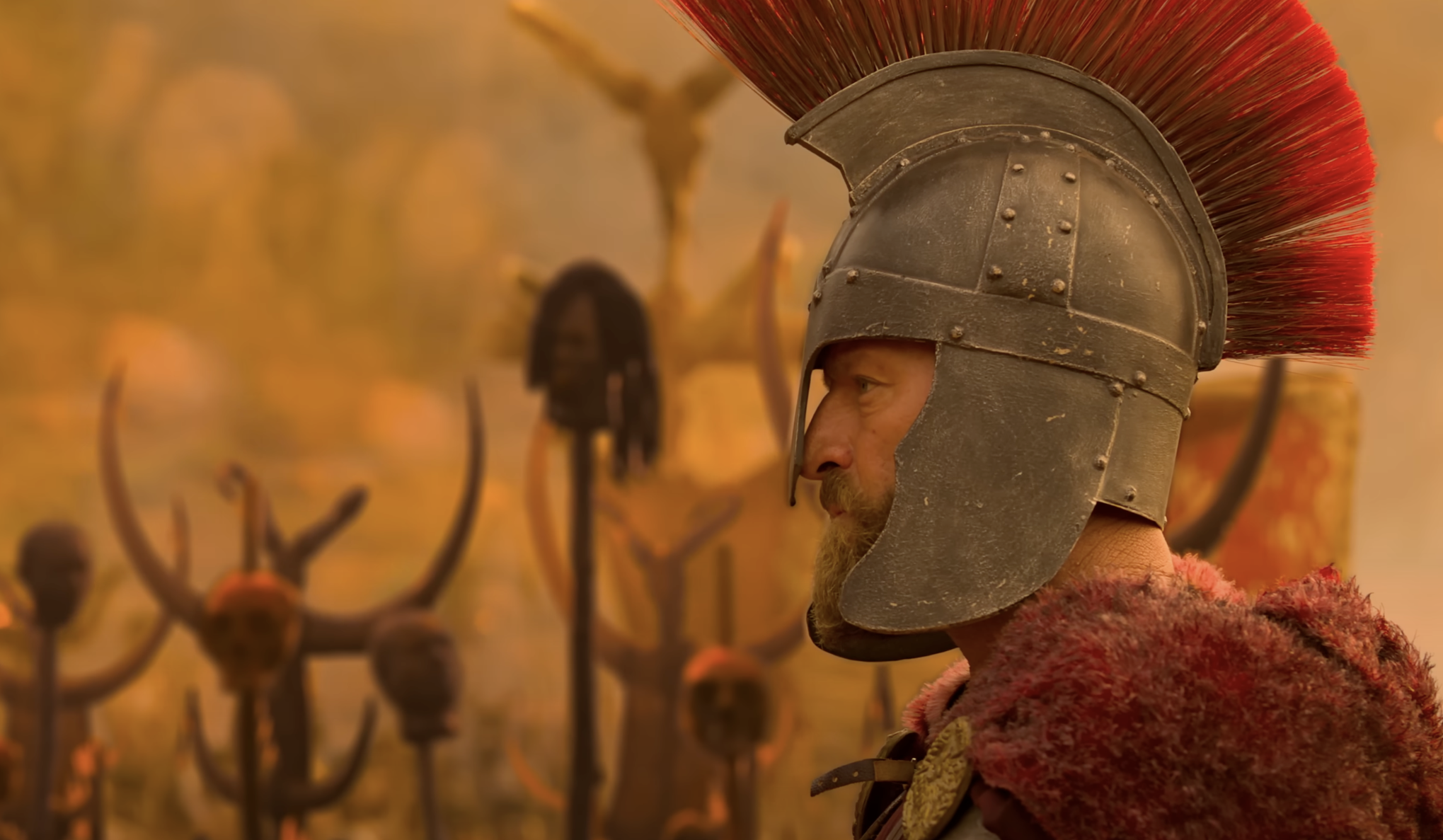
This is what I could parse through the myriad of sequences that occur one after the other once I got past the thunderous background score and the deafening screams and posturing of every single character in the movie. None of the characters, including Suriya, are designed like human beings. They are all human loudspeakers in the guise of demigods.
They don’t converse; they proclaim. Sadly, they don’t ruminate; they voice their thoughts out loudly, or even when they silently voice their thoughts, those thunder through the ether, such that the audience can understand and definitely not forget. All the characters are unidimensional, cut from the same cloth, differing variations of the violent warrior tribe. Suriya’s Kanguva is a warrior leader who screams but has honor. Bobby Deol’s Udhiran, leader of another island nation, is a fierce warrior tribe with a glass eye who screams and is not a man of honor.
Expecting any shades of character development beyond the surface is almost foolhardy, and truth be told, the battle sequences and the rage-filled proclamations should be enough to tide one over. At least that’s what director Siva and his team must have felt, given that they equate the legitimacy of a Tamil film entering the “Pan-India” stage solely with scale, overlooking everything else. “Kanguva,” as a film, almost revels in its one-dimensionality.
Siva’s modeling of the five-island nation reminds one of ancient Greek culture, while the production design is heavily inspired by “Apocalypto” (2006). However, Siva’s action set pieces are all old-school and outdated, with barely disguised wirework necessary to show Kanguva screaming in rage and jumping feet ahead to drive his knives through, or throw three or more enemies away and then attack with swords. There is interesting imagery at times—Kanguva using massive tusks as lances to battle through or top-down shots of the soldiers’ dead bodies to be gathered.
But the unmitigated nature of the violence, beheadings, and bloodshed, barely disguised by censors and further rendered ugly by CGI blood, is rendered all the more ineffective by the muddy color grading. The choice of a singular color to highlight both the primary islands is offset only by how badly the film is actually photographed. Gorgeous vistas or production designs aren’t allowed to be luxuriated upon, so much as it is to be inhaled, parsed through the smoke—either orange or snowy white. The editing is at times almost incomprehensible, which renders some of the more interesting action set-pieces (the women of Kanguva’s tribe retaliating against their attackers in the foggy forest) hard to parse through, much less enjoy.
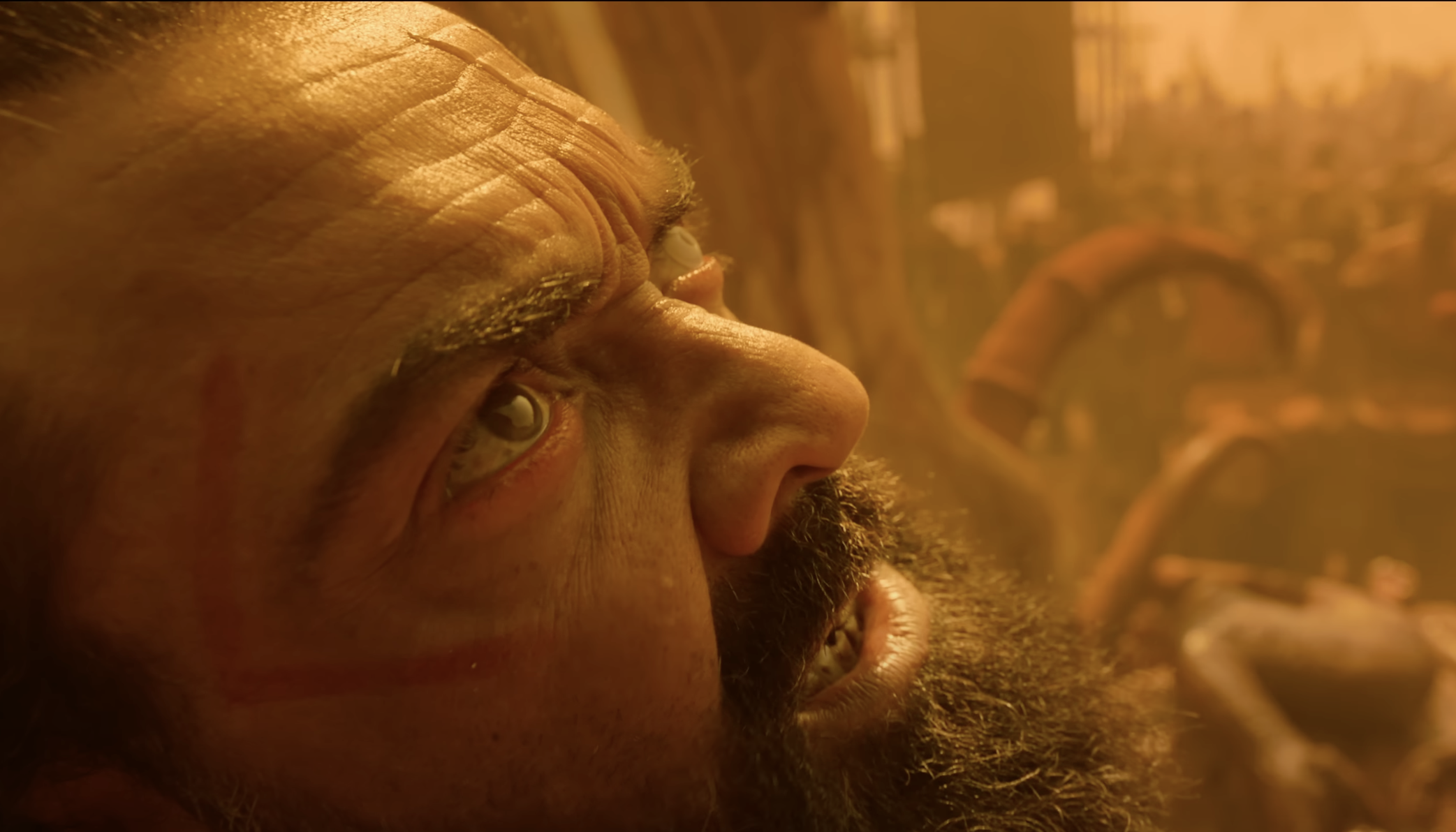
There are very rare moments when the film actually slows down, but when it does, it becomes memorable because of Suriya’s committed performance. Suriya as Kanguva is easily the standout of this film, but Suriya’s performance as the flamboyant Francis almost offsets all the goodwill of that Kanguva performance. Those intense eyes, when allowed to broaden, expand, and match the intensity of the character Suriya is essaying, are truly a weapon in his acting arsenal. The only memorable song of this entire film is Mannippu/Maafi (Hindi), where Suriya’s character is allowed to breathe and actually explore an emotional core, though I would have preferred that Siva actually allowed Kanguva to converse like a normal human being, and allowed to explore his vulnerability.
By the time the film reaches the end, it suddenly crashes forward into the present day, and then it chooses to slip back and forth between final action set pieces of both timelines, mirroring the intensity and emotionality accrued from both incidents. The problem is the entire idea of the present timeline, utilizing science fiction as well as the concept of reincarnation, is barely defined, and thus to even care about the events of the present-day sequence is expecting too much.
It is rare that the urge to leave the theatre ever crosses my mind while watching a film, but Siva’s directorial effort actually succeeded in legitimately contemplating that sentiment. Perhaps Suriya essaying the role of Francis, dressed in a white shirt caked in blood, reminded me of the fan-favorite character of Rolex, such that it would be easier to consider Kanguva as a Rolex audition tape more than anything else.
Even the teasing of another superstar in the antagonist role for the sequel doesn’t have the same effect. It rather makes me wonder about the audacity of the makers to even consider a sequel after this film, where your viewer is being pummeled into submission and begging for a reprieve. Now, if you will excuse me, I need to get my ears checked.





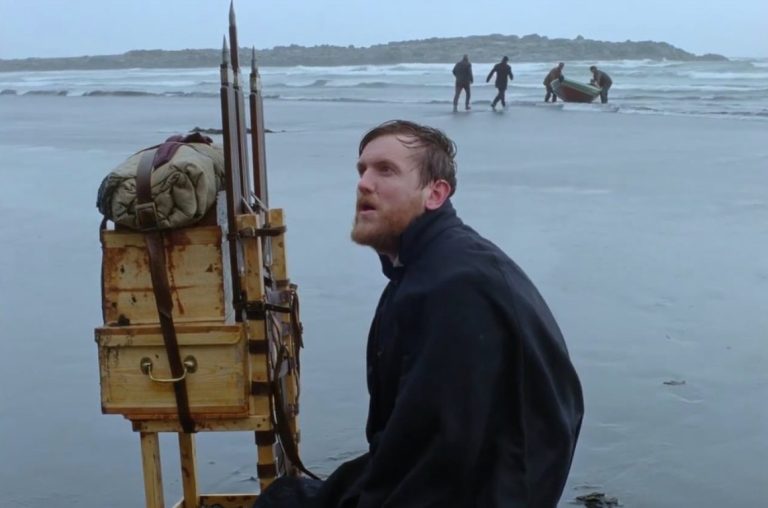
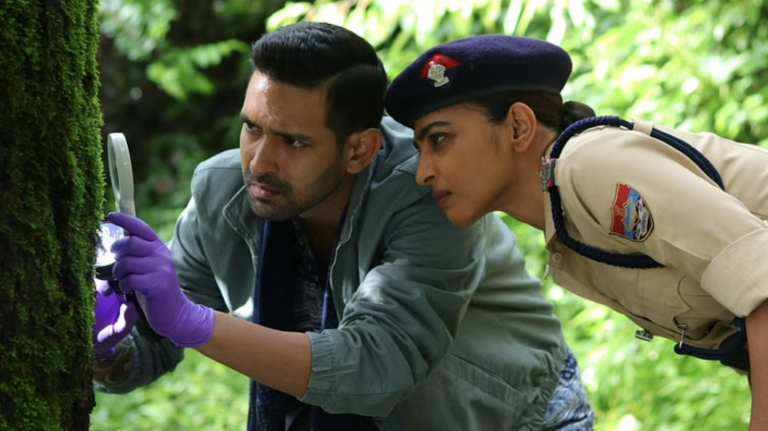
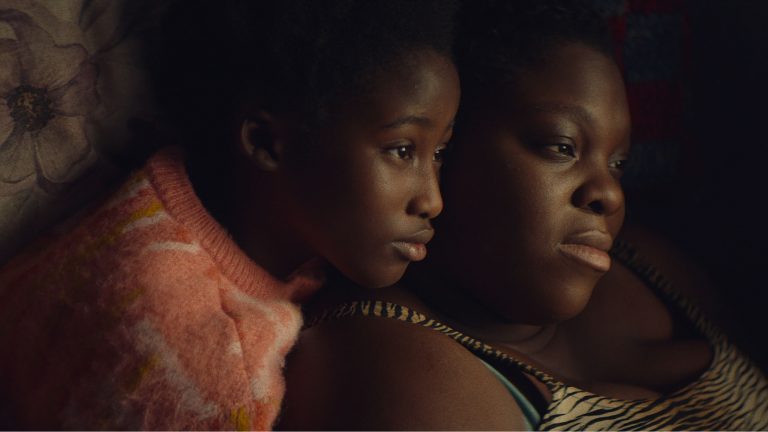
![The Day After I’m Gone [2019] MUBI Review – A Father-Daughter Relationship Drama that Investigates Grief and Mental Illness](https://79468c92.delivery.rocketcdn.me/wp-content/uploads/2019/02/The_Day_After_Im_Gone_HOF1-768x322.jpg)
![The Matrix Resurrections [2021] Review – A Romantic Heist Film That Has a lot to say about Nostalgia, Freedom and Choice](https://79468c92.delivery.rocketcdn.me/wp-content/uploads/2021/12/The-Matrix-Resurrections-768x384.jpg)